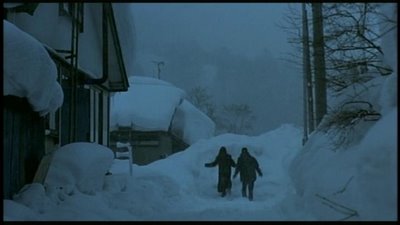
S21 forces questions common to Eichmann in Jerusalem, Ordinary Men, Obedience to Authority, and other germane works to the surface. But for those who may respect the value of these inquiries all the while internally groaning over their perplexity, it should be noted that S21 has something incredibly powerful up its sleeve that is nothing short of a marvel of human experience: it allows a former inmate of prison S21 to confront and engage former prison guards. In whole, S21 actually features two survivors of the death house, Chum Mey and painter Vann Nath (supposedly two of the only 7 survivors, out a total 14,000+ prisoners/victims). However, we never see Chum Mey in the same shot as one of the former prison workers. Considering his rapture while standing on the grounds of the prison, it would be no surprise if facing those unfathomably cruel devils from his past were simply impossible.
On the other hand, Vann Nath is possessed of a composure that stupefies. He is the piece’s protagonist of sorts. I would call him our guide, but that would be inaccurate and would obscure what are some of S21’s most truly disturbing scenes. Through some means, Rithy Panh manages to get his former prison guards to elaborately re-enact their former routines. (Though perhaps it took no coaxing at all, thus revealing yet another possible avenue for psycho-social speculation, theorizing, and inquiry.) Aging Khmer Rouge shout verbal abuses at imaginary prisoners, threatening them with physical beatings should they fuss to much, not be quiet, and go to sleep; they check imaginary locks; and peer into empty cells. During these scenes, it is hard to penetrate the psychological interiors of the men. On some level are they taking a stroll down memory lane? In circumstances as extreme as these, it is troubling to watch these old routines repeated in such cold and icy fashion.
Perhaps a clue is given to why this is so in a late exchange between Nath and three of the former S21 keepers. Nath argues that the Khmer Rouge’s stated practice of annihilation goes beyond that of killing in that annihilation leaves nothing of the victim but dust. One can extrapolate that it is a complete eradication of his past and traces; it leaves not even a memory of an individual’s time on earth. This is obviously more than a rhetorical embellishment given that the Khmer Rouge as discussed in the film would kill women and children, leaving no legacy or relations of supposed traitors, informants, or “enemies.” But can one not come away from this scene in particular without noting the utter vacuous looks of the former guards in contrast to Nath? The annihilating sword is revealed to be double-edged; in the case of the former stewards of S21, it is their humanity which has been completely stripped away and exterminated.







